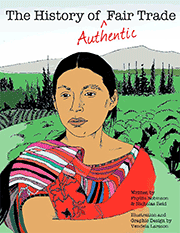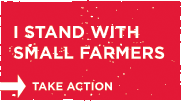The weekend has arrived and it’s time to stock up the fridge and replenish the cupboards. Where do you choose to shop: the supermarket chain in your town? Whole Foods? Trader Joe’s? Or perhaps, your local food co-operative?
Many of us who are concerned about the food we eat – where it comes from, who grows it, and how it’s grown, processed, and distributed – choose to buy our groceries at the local food co-operative, where we may also choose to become members. Why favor food co-operatives over other grocery stores and supermarkets? For some, it’s to support the ideals of community control and democratic ownership. There’s a sense that the products on the shelves are healthier for us, the farmers, and the planet. Many engaged consumers also believe that food co-operatives provide a greater selection of organic, local, and Fair Trade products and will come from companies that share these principles.
For those of us who are deeply committed to these values, there’s a desire to see them reflected in our food choices: it’s just another way of voting, only in place of ballots, we’re using our consumer dollars. There’s an assumption that most, if not all, of the brands being offered also reflect this commitment to small farmers and businesses, organic and natural farming practices, and whenever possible, are locally or Fair Trade produced. I believe that most food co-op members and consumers want to know that the companies behind the products share a commitment to social change, democratic principles and are working as part of the movement to create a green and just food system.
Alas, this is not always the case. It is not even often the case.
Even natural and organic products’ origins get tricky. Check out the flow chart below, created by Dr. Phil Howard, a professor at Michigan State University who is pioneering research into the corporate consolidation of our food system.

Do you see your favorite organic brand mentioned above? Are you shocked, as I was, to see how many of those companies are actually owned by the likes of Coca-Cola, Kraft and Cargill? Is it disheartening to discover the degree to which a few corporations and their subsidiaries currently dominate the natural foods industry? Do you think that they share the same commitment to growers and consumers, workplace democracy, a transparent and fair food system (up and down the supply chain), and a healthy planet? How easy would it be even to learn this information?
On Phil Howard’s website, you can get a better view of these charts and learn more about these disturbing trends. You can also read an excellent interview with him that Equal Exchange’s marketing writer, Ashley Symons, conducted during Howard’s 4-day visit to Equal Exchange in June of this year. During our exchanges with Dr. Howard, he showed us a number of slides which graphically present how increasingly consolidated the organic industry has become. In every aspect of the supply chain – production, processing, distribution and retail – the entire food industry is in the hands of fewer and fewer multi-national companies. And so, if you thought that there was something different about the organic industry, think again.

In stark contrast, Howard has also published an “Independents” chart that represents the minimal presence of independent and cooperatively-owned businesses in the national natural foods market. You’ll see Equal Exchange on there, along with three other cooperatively owned businesses: Organic Valley, Alvarado Street Bakery, and Frontier Natural Products. Not many, are there?
Why does any of this matter?
As a co-operative business, Equal Exchange’s model shares many values with our food co-operative partners and their members and consumers. We believe in an economic model and supply chain that emphasizes small-scale farmers, independent business owners and co-operatives. We want our purchases – as a company and as individuals – to support other companies and co-operatives that are trying to restructure and revitalize our food system by strengthening democratic models, practicing sustainable agriculture methods, and whose missions share the goal of providing food for people not for the profits of a handful of food conglomerates.
What can we do about this imbalance in the food industry, now being mirrored in the organic industry? How do we “take back” our food system?
The comparison between corporate businesses versus independently-controlled brands and products is startling and bleak, but it is our belief that the actual situation is much more inspiring. The solution to corporate domination barely exists on a national level… yet. By its very nature, the hope of the organic and Fair Trade movements (as they were originally conceived) exists in co-operatives and in pockets “off the radar,” locally and regionally. Small farmers, co-operative food companies, and regional independents supply their local co-ops with produce, dairy, baked goods and bulk products. They are the real champions of a more just and environmentally-responsible food system.
Once awareness of the trends in the organic industry (which parallel similar trends in the media, banking, and other sectors) grows, it will be easier to take action. As more and more people begin to grasp the impact a corporate controlled food system is having on our lives and our planet, we believe it will be easier to take the appropriate actions – both through political arenas and through our own individual and collective behaviors.
We can take back our food system!
At Equal Exchange, we believe that the first step in fixing this broken and imbalanced food system is to understand how it currently works and who it favors. Next we can begin imagining the system we want, and working together, we can make a better, more fair system possible. This is the movement that food co-operatives, interfaith groups, and engaged consumers helped build with respect to Fair Trade, and prior to that with organics. Now it’s time to go even deeper. We believe that Phil Howard’s research and these charts are providing a great contribution to advance this movement.
We are currently working with food co-ops to help them create their own “Independents Chart” that shows the regional, independently-controlled businesses that are making a difference in their area; companies at the cusp of sustainable agriculture, community activism and social responsibility. We believe that by providing this type of information to co-op members and consumers, we can begin to help each other make more conscious choices to support the brands that are more closely aligned with these values. In this way, food co-operatives, committed to building a supply chain for people, can continue to educate members about the extent of corporate domination, but also offer an alternative – one the supports communities, co-operatives and the environment.
Nick Reid, a salesperson with our Natural Foods team, teamed up with one of our long-time food co-operative allies, Sevananda Natural Foods Market in Atlanta, Georgia, to come up with a chart that shows the local, regional and independent vendors whose products are sold in their store.

In the case of Sevananda, the choices are clear. Consumers do have viable choices. But informed decisions require information. We believe that this is the starting point… where we end up is our choice. And it starts with the next trip for groceries.
What do you think?
Nick Reid contributed to this article.
Read Full Post »






